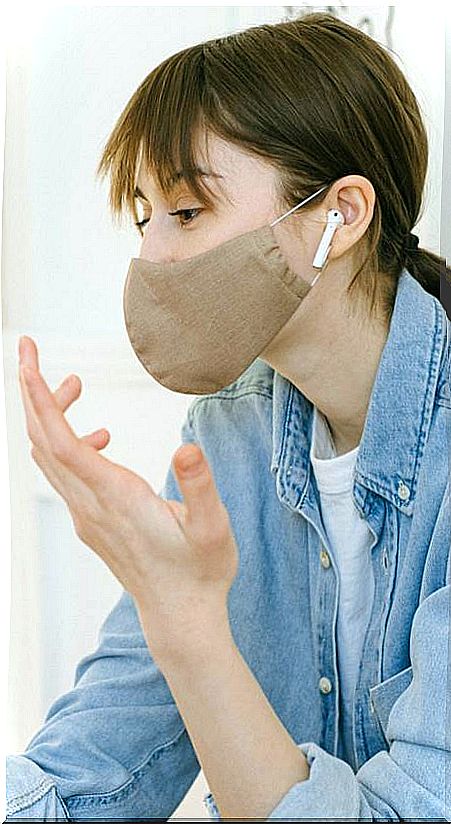What Is The Most Suitable Mask For Continuous Use?
At last, the use of masks is mandatory in closed spaces and public places where the safety distance cannot be guaranteed. Hygienic cloth masks are a good option for continued use. We explain how to use, store and disinfect them.

As of this Thursday, May 21, it is mandatory in Spain to wear a mask in all public spaces, closed or open, where the safety distance of two meters between people cannot be kept at all times. The obligation affects all persons over 6 years of age and it is recommended that children over 3 years of age also carry it.
The new national regulations will mean that many people must wear a mask for several hours a day, almost every day. The legal order recommends the use of hygienic or surgical masks, although FFP2 and FFP3 can also be worn. When choosing a mask you have to assess the advantages and disadvantages.
An effective and sustainable alternative: the fabric mask
- Surgical masks, which protect others, but not you from people who are not wearing them, can only be used for 4 hours in a row and then must be discarded because they lose effectiveness. They are not, therefore, the most efficient, economical or sustainable option.
- The FFP2 and FFP3 masks are effective in protecting yourself and so that you do not infect others, with one exception: those with a valve allow the virus to escape and do not prevent the infection of others if you are a carrier. This type of mask can only be used if the exterior is covered with a surgical mask.
The FFP2 and FFP3 are effective, but to use them daily you have to provide yourself with 7 masks, to use one each day and let the newly used one be disinfected by not using it for a week. Another option is to disinfect the mask in the oven at 70ºC for 30 minutes, but there is a risk that it will deteriorate. It is not the cheapest or most comfortable option. - Hygienic fabric masks have the advantage that they can be washed and disinfected, and they can incorporate a disposable filter that brings their protective efficacy closer to that of FFP2, even if they are not approved as such. From an environmental point of view, those made of cotton fabric are preferable, if possible ecological, instead of those made of polyester, because these, every time they are washed, release microplastics that can end up in the sea where they are a threat to ecosystems. .
How to use the cloth mask
Restrictions to contain the new coronavirus are being relaxed in many places and people are coming back in contact more frequently, posing a risk. This is why it is more important than ever to wear a mask, but it must be fitted, stored and disinfected properly.
To help you with the task, imagine that your mask is a very special piece of cloth that should only come into contact with three places: your face, a germ-free storage place (a container, for example) and the washing machine. Therefore, you should not touch it with your hands (only because of the elastic bands) and you should not leave it in pockets, bags or tables.
The mask should fit snugly, but without leaving open spaces on the sides of the nose or cheeks. It needs to cover the nose and chin. The cloth masks that are being marketed tend to fit much better than the surgical ones.
If the mask is uncomfortable or pinches you, you will touch your face more often to correct the fit. This will increase the risk of carrying virus to or from the mask to the skin.
A well-designed, hygienic cloth mask does not cause any respiratory distress. However, some people become overwhelmed for subjective psychological reasons. If this is your case, think that you just have to get used to the sensations and you will immediately realize that you can breathe normally.
If you use a disposable filter it can increase the feeling of lack of air, but think that it is designed so that enough oxygen can pass through. If you don’t get used to it in a day or two, consider using another type of mask.
Touch the mask as little as possible
If possible, always handle the mask with washed hands and hold it by the rubber bands or tapes. Peter Walger, spokesman for the board of the German Society for Hospital Hygiene, emphasizes: “the interior should never be touched.” Doing so could transport viruses directly into the mask, from where it would enter your mouth and nose.
But pathogens, both foreign and your own, can also accumulate on the outside of the mask, so it should not be touched either. In the case of children, do not let them put on the mask alone; we must put it on us.
When the mask is not on the face, it should be kept in a place where it cannot absorb or distribute viruses. For example, a small plastic bag or, better yet, a container.
It should not be kept in a purse or pocket. It should also not be left around the neck or hanging under the chin for a long time because viruses can spread more easily.
Important: change it when it’s wet
It is important that you put on the mask just before leaving home. If you put it on much earlier, you may already get to the supermarket or wherever you want to go with the wet mask and in that case it will no longer offer protection.
Change your mask when you notice it wet. If the mask is wet, pathogens can penetrate the fabric unhindered. Ideally you should carry a replacement mask (in a separate plastic bag) with you. You should also change your mask when exercising.
After using the mask for a few hours or after it has been moistened, it must be disinfected as soon as possible. It is not convenient to store it without washing it to use it the next day. As you can see, it is highly recommended that you have at least three hygienic masks. So you can wash one and take two with you.
To disinfect it, it is enough to wash it with the rest of the clothes on a long program and then dry it in the sun or in the washing machine. If you want a quick disinfection, leave it in freshly boiled water for 30 minutes and then wash it by hand. You can finish the hygiene with an ironing.
To know more
Official information from the Spanish government:
- What you should keep in mind when buying a mask.









